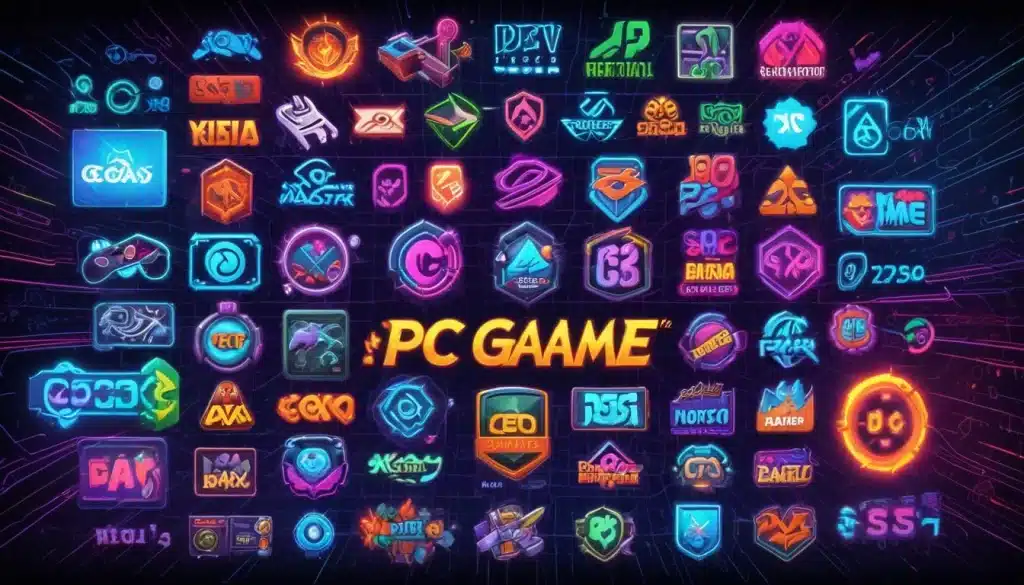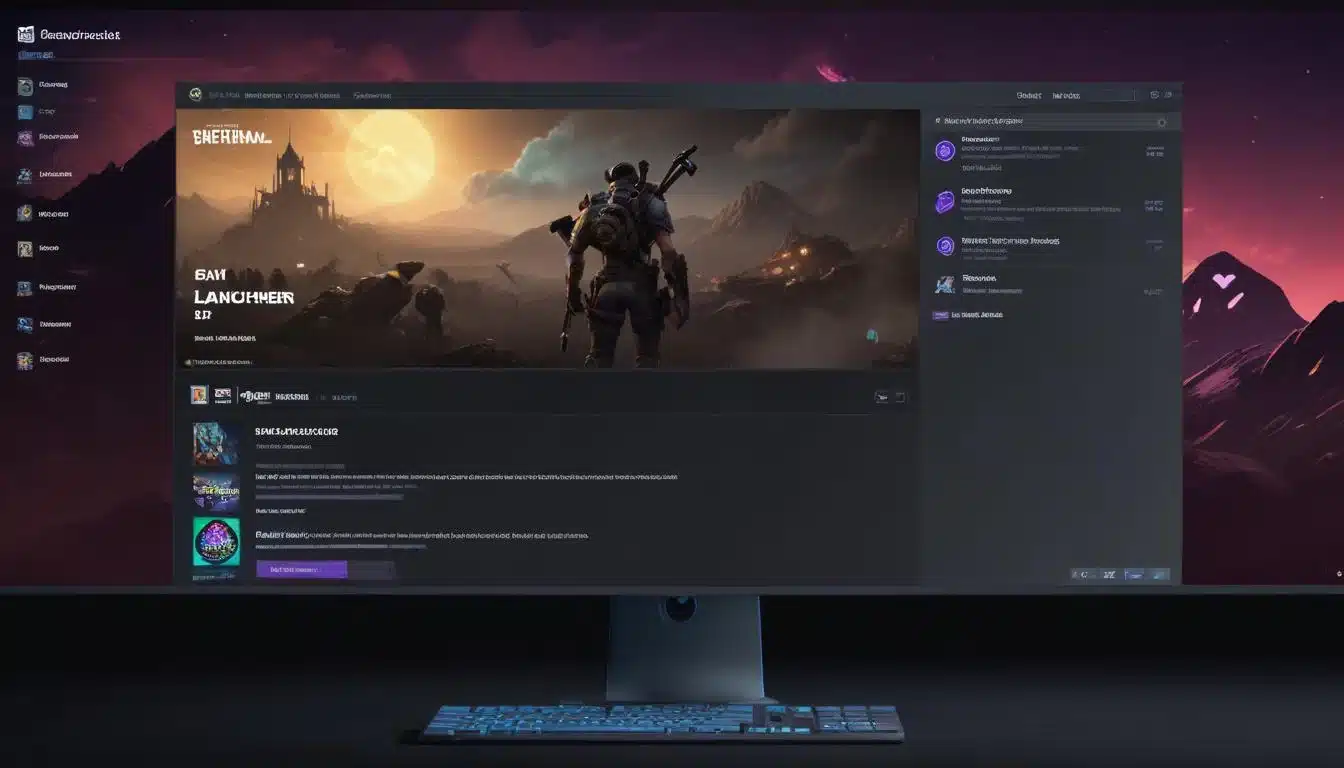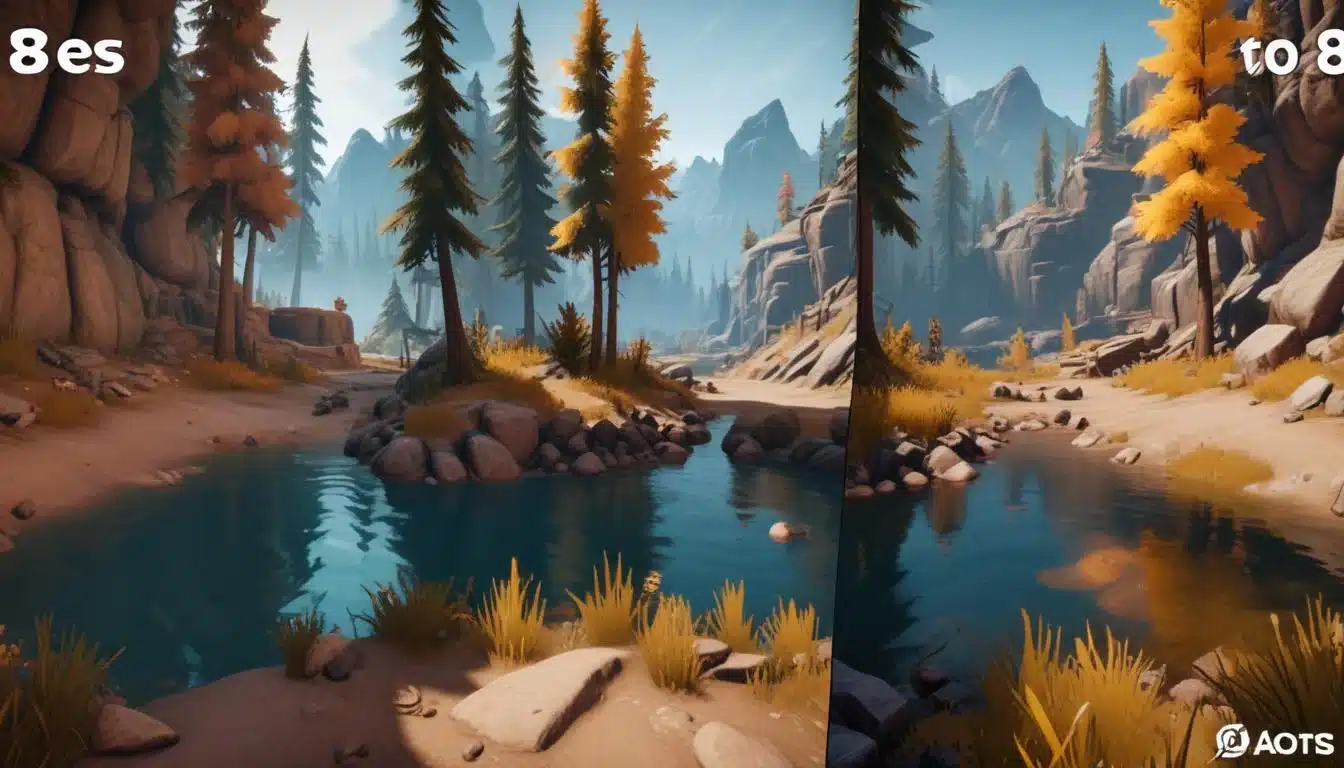Latest PC Game Patches: Fix Bugs, Boost Performance Up To 25%

The latest PC game patches are crucial for resolving common bugs and delivering significant performance improvements, often boosting frame rates by up to 25% for a smoother, more enjoyable gaming experience across various titles.
In the dynamic world of PC gaming, staying updated is key to a superior experience. The latest PC game patches are not just about fixing minor glitches; they often bring substantial improvements, including resolving common bugs and boosting performance by up to 25% in current titles, transforming your gameplay.
Understanding the Importance of Game Patches
Game patches are digital updates released by developers to address various issues and introduce new content. They are an essential part of the modern gaming ecosystem, ensuring longevity and quality for players. Without these regular updates, games would quickly become outdated, riddled with bugs, and unable to keep up with evolving hardware and software.
These updates serve multiple critical functions, ranging from security enhancements to complete overhauls of game mechanics. Developers constantly monitor player feedback and internal metrics to identify areas needing improvement, making the patching process a continuous cycle of refinement and innovation.
Why Patches Are Non-Negotiable for PC Gamers
- Bug Resolution: Patches squash annoying bugs, from minor visual glitches to game-breaking crashes, ensuring a stable play experience.
- Performance Optimization: Many patches focus on optimizing game code, leading to smoother frame rates and reduced stuttering, sometimes improving performance by up to 25%.
- New Content & Features: Developers often use patches to introduce new levels, characters, items, or game modes, refreshing the gameplay.
- Security Enhancements: Patches can close security vulnerabilities, protecting players from exploits and cheats, especially in online multiplayer titles.
Ultimately, understanding and promptly applying game patches is crucial for any serious PC gamer. They are the backbone of a healthy and evolving gaming experience, directly impacting enjoyment and competitive edge.
Common Bugs Addressed by Recent Patches
Recent PC game patches have been instrumental in tackling a wide array of common bugs that often plague new releases and even older titles. These bugs can range from minor annoyances to severe issues that render a game unplayable. Developers are increasingly responsive, deploying fixes rapidly to maintain player satisfaction and game integrity.
The complexity of modern games means that bugs are almost inevitable upon launch. However, the speed and effectiveness with which these issues are addressed through patches speak volumes about a developer’s commitment to their community. Players often report these bugs through forums and in-game feedback systems, providing crucial data for developers.
Game-Breaking Glitches and Their Solutions
Many players have experienced frustrating game crashes, corrupted save files, or quests that couldn’t be completed. Recent patches for titles like ‘Cyberpunk 2077’ and ‘Starfield’ have notably focused on stabilizing these experiences. For instance, ‘Cyberpunk 2077’ received numerous patches that significantly reduced crash frequency and fixed progression blockers, making the game far more enjoyable than at its initial release.
- Crash Fixes: Patches often target specific code errors causing sudden game shutdowns, improving overall stability.
- Quest Progression: Bugs preventing players from completing story missions or side quests are frequently high-priority fixes.
- Corrupted Saves: Data corruption issues that could erase hours of progress are often addressed through hotfixes and major patches.
Beyond these critical issues, patches also tackle graphical anomalies, audio desyncs, and user interface glitches that, while not game-breaking, significantly detract from the immersive experience. The continuous effort to refine these elements demonstrates the ongoing commitment to quality in the PC gaming landscape.
Significant Performance Improvements Up To 25%
One of the most exciting aspects of the latest PC game patches is their ability to deliver substantial performance improvements, sometimes boosting frame rates by up to 25%. This isn’t just about minor tweaks; these optimizations can fundamentally change how a game feels, making previously unplayable scenarios smooth and responsive. These enhancements are often achieved through more efficient resource management, better utilization of modern hardware, and streamlined rendering pipelines.
These performance gains are particularly noticeable in graphically intensive games or titles that were initially poorly optimized. A 25% increase in frame rate can mean the difference between a choppy 40 FPS and a fluid 50 FPS, or even pushing a game from 60 FPS to a buttery-smooth 75 FPS, especially beneficial for players with high refresh rate monitors.

How Developers Achieve Performance Boosts
Achieving such significant performance boosts involves a multi-faceted approach. Developers employ various techniques to optimize their games, often collaborating closely with hardware manufacturers to leverage the latest GPU and CPU architectures. This synergy ensures that games run as efficiently as possible on a wide range of PC configurations.
- Shader Optimization: Streamlining how light and effects are rendered can significantly reduce GPU load.
- CPU Threading Improvements: Better utilization of multi-core processors helps distribute workloads more efficiently, reducing CPU bottlenecks.
- Memory Management: Optimizing how the game uses RAM and VRAM can prevent stuttering and improve loading times.
- Asset Streaming: Enhancements in how game assets (textures, models) are loaded can reduce pop-in and improve overall fluidity.
These technical improvements translate directly into a more enjoyable gaming experience, allowing players to push graphical settings higher or simply enjoy a more stable frame rate without needing to upgrade their hardware. The commitment to performance optimization through patches is a testament to the evolving standards of PC gaming.
Impact on Popular Current Titles
The impact of the latest PC game patches is vividly apparent in many popular current titles, transforming initial launch experiences into refined, high-performing gaming sessions. Games that once struggled with performance issues or were plagued by bugs have seen remarkable turnarounds thanks to dedicated post-launch support. This continuous improvement cycle is vital for a game’s long-term success and player retention.
From expansive open-world RPGs to competitive first-person shooters, various genres have benefited. Developers are increasingly recognizing that a game’s launch is just the beginning, and ongoing support through patches is crucial for building a loyal player base and a positive reputation.
Case Studies: Games Transformed by Patches
Consider titles like ‘No Man’s Sky,’ which launched to mixed reviews but has since been lauded for its incredible post-launch support, adding vast amounts of content and performance optimizations that completely reshaped the game. Similarly, ‘Assassin’s Creed Valhalla’ received numerous patches that not only fixed bugs but also improved stability and frame rates across various PC configurations, making its vast world more enjoyable to explore.
- Cyberpunk 2077: Major patches drastically improved stability, fixed game-breaking bugs, and optimized performance, especially on higher-end systems.
- Starfield: Post-launch updates addressed stuttering, improved FSR implementation, and fixed numerous quest bugs, enhancing the exploration experience.
- Hogwarts Legacy: Patches brought significant performance gains, particularly in areas with dense environments, and resolved various graphical glitches.
These examples highlight how developers are leveraging patches not just for maintenance but as a tool for ongoing evolution and enhancement. Players can now expect their favorite titles to improve over time, making their initial investment even more valuable.
Best Practices for Applying Game Patches
Applying game patches correctly is just as important as the patches themselves. While most game launchers and platforms automate the process, understanding best practices can prevent potential issues and ensure you fully benefit from the updates. A smooth patching process contributes directly to an uninterrupted and optimized gaming experience.
Ignoring these practices can sometimes lead to corrupted installations, lost save data, or even more performance issues than before the patch. Taking a few simple precautions can save you a lot of headache and allow you to dive back into your favorite games faster.

Tips for a Seamless Patching Experience
Before initiating any major game update, it’s always wise to back up your save files, especially for single-player games where progress is critical. While rare, patch installations can sometimes go awry, and having a backup ensures your hard-earned progress is safe.
- Verify Game Files: After a patch, use your game launcher’s ‘verify integrity of game files’ option to ensure no corruption occurred during the download or installation.
- Update Drivers: Always ensure your graphics card drivers (NVIDIA, AMD, Intel) are up to date, as many game patches are optimized for the latest driver versions.
- Disable Overlays: Temporarily disable in-game overlays (Steam, Discord, NVIDIA GeForce Experience) during patching, as they can sometimes interfere with the process.
- Monitor Disk Space: Ensure you have sufficient free disk space before downloading large patches to prevent installation failures.
Following these simple steps can significantly reduce the chances of encountering issues during or after a patch installation. This proactive approach ensures that the latest PC game patches deliver their intended benefits without any unforeseen complications.
The Future of PC Game Patches and Optimization
The future of PC game patches looks increasingly sophisticated, driven by advancements in AI, machine learning, and cloud computing. We can anticipate even more dynamic and personalized optimization strategies, moving beyond generic fixes to highly tailored adjustments based on individual player hardware and preferences. The goal is to make the patching process even more seamless and impactful.
Developers are constantly exploring new methodologies to streamline the update process, reduce patch sizes, and deliver fixes more rapidly. The trend towards live-service games also means that continuous updates will remain a cornerstone of the PC gaming experience, with an emphasis on evolving content and technical refinement.
Emerging Trends in Game Patching
One significant trend is the rise of adaptive patching, where games might download only the necessary components based on a player’s specific hardware configuration or the content they actively engage with. This reduces bandwidth consumption and installation times, making updates less intrusive.
- AI-Driven Optimization: AI could analyze player systems and gameplay data to suggest or automatically apply optimal settings and micro-patches.
- Modular Updates: Breaking down patches into smaller, more manageable modules, allowing players to download only what’s relevant to their current game state or chosen content.
- Cloud-Based Patching: Leveraging cloud infrastructure to deliver updates faster and more reliably, potentially even streaming minor fixes without full downloads.
- Proactive Bug Detection: Advanced telemetry and machine learning could help developers identify potential bugs before they become widespread, leading to quicker pre-release fixes.
These innovations promise a future where PC game patches are not just reactive fixes but proactive enhancements, continuously adapting to provide the best possible gaming experience. The ongoing evolution of patching ensures that PC gaming remains at the forefront of technological advancement and player satisfaction.
| Key Aspect | Brief Description |
|---|---|
| Bug Fixes | Resolves critical issues like crashes, quest blockers, and graphical glitches for stable gameplay. |
| Performance Boosts | Optimizes code for smoother frame rates, often increasing performance by up to 25%. |
| New Content | Introduces fresh game modes, characters, or levels to keep titles engaging. |
| Best Practices | Back up saves, verify files, and update drivers for a seamless patching experience. |
Frequently Asked Questions About PC Game Patches
PC game patches are crucial for fixing bugs, enhancing performance, and introducing new content. They ensure games remain stable, secure, and enjoyable over time, adapting to new hardware and player feedback. Without them, games would quickly become outdated and prone to technical issues.
Yes, significant performance improvements of up to 25% or more are possible with well-optimized patches. Developers can streamline code, enhance resource management, and better utilize hardware, especially in games that were initially poorly optimized, leading to smoother frame rates and reduced stuttering.
Patches address a wide range of bugs, from critical issues like game crashes, corrupted save files, and quest progression blockers, to minor graphical glitches, audio desyncs, and user interface problems. They ensure a more stable and immersive gaming experience for players.
Before applying a patch, it’s recommended to back up your save files, especially for single-player games. Also, ensure your graphics drivers are updated, disable any in-game overlays, and check for sufficient disk space to prevent installation issues.
Future patches are expected to become more sophisticated, leveraging AI and machine learning for dynamic optimization. Trends include modular updates, cloud-based patching for faster delivery, and proactive bug detection, aiming for even more seamless and personalized gaming experiences.
Conclusion
The continuous evolution of PC gaming is deeply intertwined with the regular release of game patches. These updates are far more than mere technical adjustments; they are vital instruments for enhancing stability, eradicating frustrating bugs, and crucially, boosting performance by significant margins, often up to 25%. For any dedicated PC gamer, understanding and actively engaging with these updates is paramount to unlocking the full potential of their gaming library. As developers continue to refine their patching strategies, the future promises an even more optimized, bug-free, and immersive gaming landscape, ensuring that the thrill of playing on PC remains at the forefront of digital entertainment.